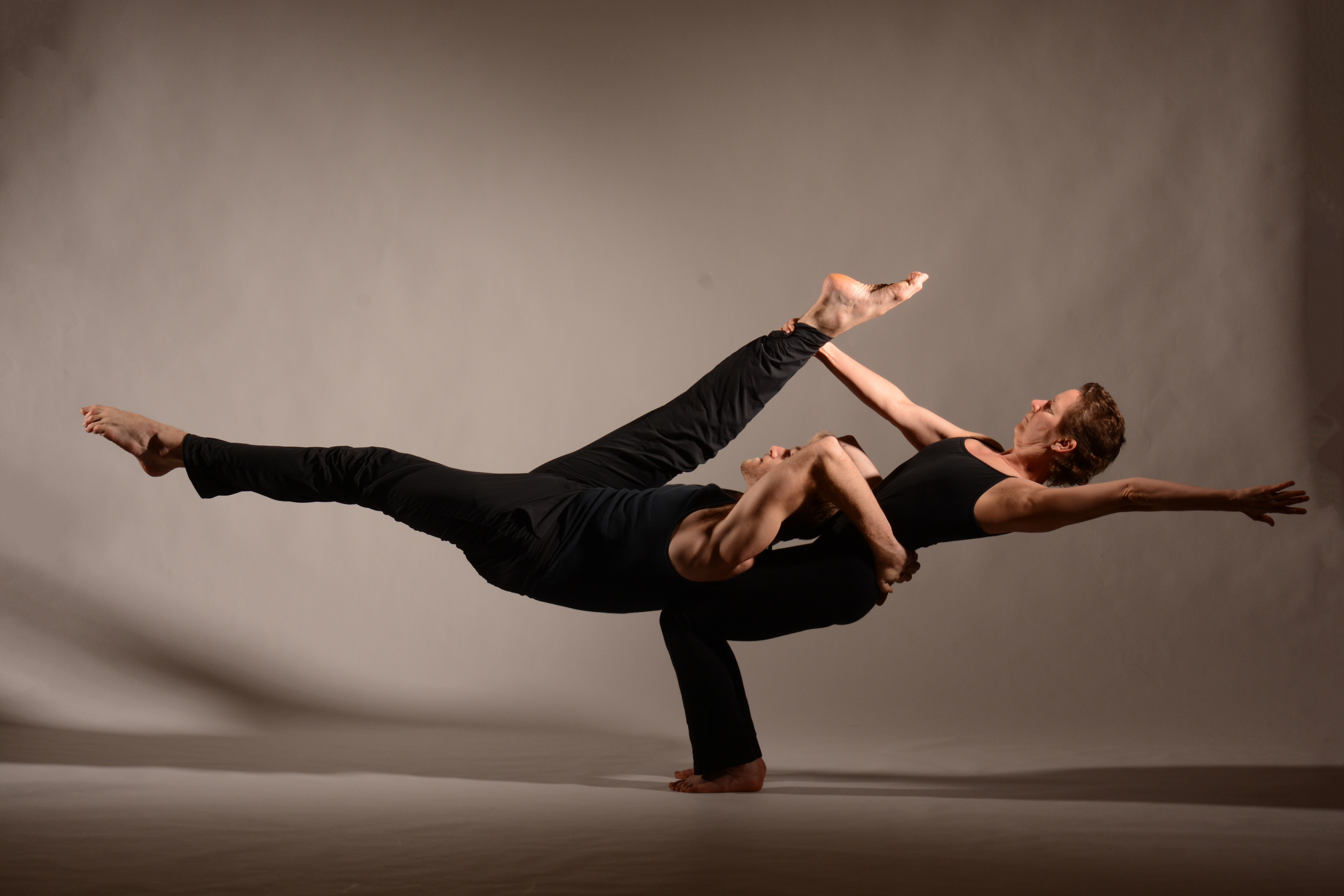CHICAGO — Two festivals which ran simultaneously this month — the Pivot Arts Festival in Uptown and Edgewater and the Physical Theater Festival in Lakeview — have more in common than their North side roots. Each is a veritable grab bag of contemporary performances from Chicago and beyond, many of which defy categorization.
The Physical Theater Festival umbrellas a wide variety of interdisciplinary works that use the body as a means of expression; indeed, physical theater is an amorphous discipline combining skills from theater, dance and circus arts, while possessing a unique set of properties all its own. So, in a sense, physical theater artists must be specialized generalists, with expertise which span these genres and mastery of how they interact together.
At least, that was the case in “A Life With No Limits” by Aura CuriAtlas. “A Life With No Limits” was performed June 3 and 4 at Stage 773.
The group of five, Dan Plehal, Fiona Wren, Joan Gavaler, Mickey Lonsdale and Richie Schiraldi, warmed up the crowd with a nugget called “Special Delivery,” followed by an introduction to the company. The main event, “A Life With No Limits,” is an hour long work inspired by the life of Steven Hawking, a theoretical physicist most famous for his book, “A Brief History of Time.” Hawking lived with ALS for more than five decades, a degenerative disease affecting the nervous system that leads to eventual paralysis, loss of speech and inability to swallow. Hawking continued to work as his disease progressed, and he maintained a public profile by giving numerous talks with the use of voice assistance and a motorized wheelchair. The actors themselves don’t say a word, but Hawking’s digitized words are scattered throughout “A Life With No Limits,” which otherwise uses body language and original music by Sophia Serghi to tell the story.
It’s not a literal telling, though. Founding Aura CuriAtlas member Lonsdale does, indeed, portray a sciency-type whose physicality changes through the course of an hour. And Gavaler perhaps portrays a Jane Wilde figure, Hawking’s first wife, evidenced only by a loving gaze and repeated peck on Lonsdale’s cheek. But the strength of this piece is that it largely abandons the narrative of Hawking’s life and, instead, uses dance and acrobatics to flirt with images which look like physical representations of molecules or the cosmos.
There’s nothing astounding about Aura CuriAtlas’s dancing, having clearly spent more time and effort on the acrobatic stunts and body language in this piece. About the latter, Lonsdale offers a thoroughly impressive performance as he tackled the most sensitive topic: the physicalization of a man who’s physicality is changing and deteriorating. This could have easily been uncouth — offensive even — but I think it’s handled with enough respect and authenticity to really get at the point: What must it feel like to work and live in a body that increasingly doesn’t work, with a mind that is nothing short of brilliant?
Lonsdale spent much of the latter part of “A Life With No Limits” in a chair, hoisted by his castmates and assisted in his work, depicted here by organizing and reorganizing a series of cards containing a made-up hieroglyphic language. There are, perhaps, loose references to doctors poking and prodding at Hawking, to the numerous graduate assistants who participated in his care, and to the complexities of his personal life, which was always quite private — his disability rarely, if ever (as far as I know) perceived by him as a confounding factor in living his life.
It’s mostly in the abstract, thank goodness, evading the strong possibility that this could all have been quite cheesy. It’s not, and Aura CuriAtlas’s strength really lies in their ability to physicalize a story and integrate acrobatics as a meaningful element, rather than applause-inducing virtuosity.
